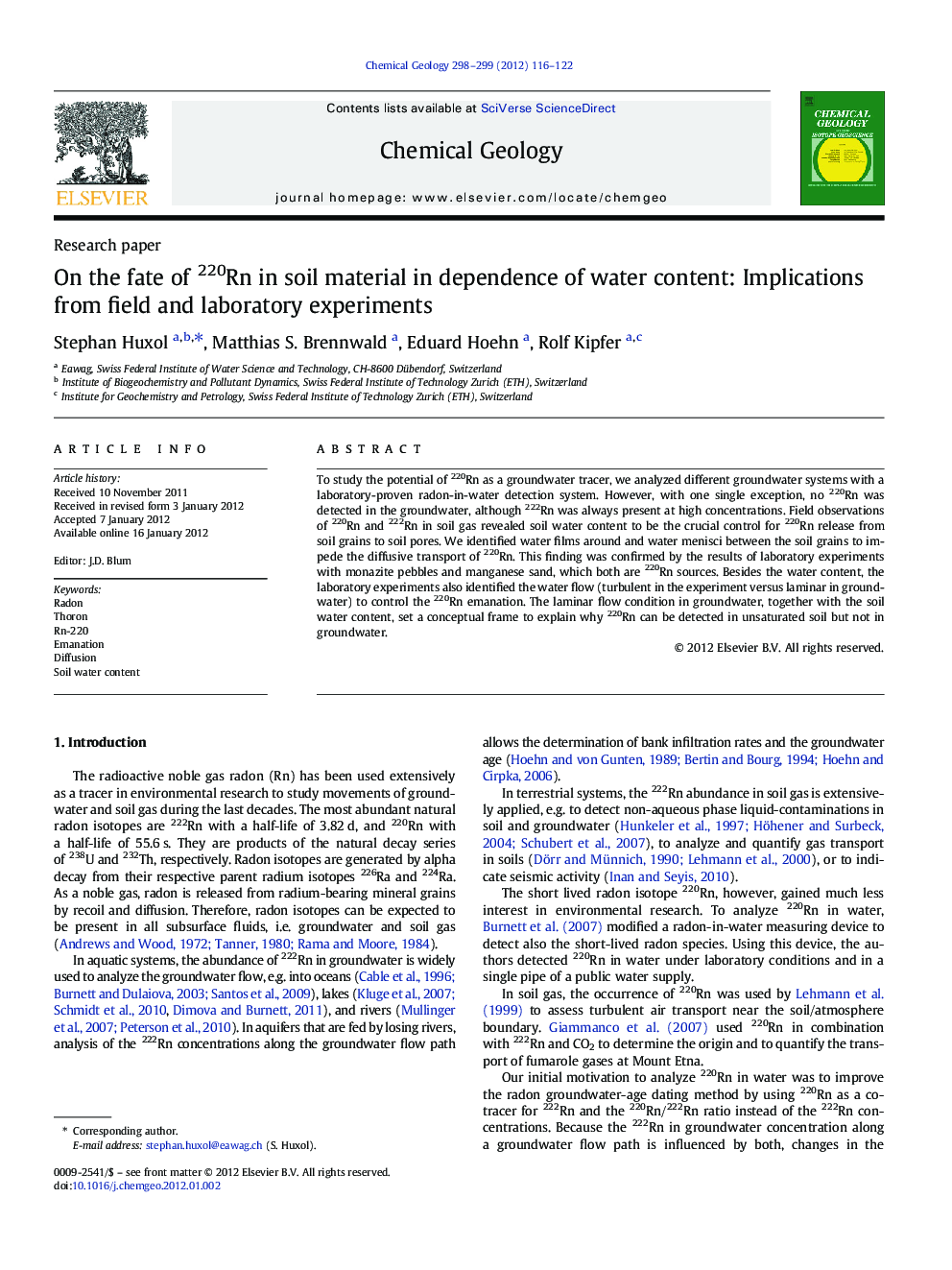| Article ID | Journal | Published Year | Pages | File Type |
|---|---|---|---|---|
| 4699544 | Chemical Geology | 2012 | 7 Pages |
To study the potential of 220Rn as a groundwater tracer, we analyzed different groundwater systems with a laboratory-proven radon-in-water detection system. However, with one single exception, no 220Rn was detected in the groundwater, although 222Rn was always present at high concentrations. Field observations of 220Rn and 222Rn in soil gas revealed soil water content to be the crucial control for 220Rn release from soil grains to soil pores. We identified water films around and water menisci between the soil grains to impede the diffusive transport of 220Rn. This finding was confirmed by the results of laboratory experiments with monazite pebbles and manganese sand, which both are 220Rn sources. Besides the water content, the laboratory experiments also identified the water flow (turbulent in the experiment versus laminar in groundwater) to control the 220Rn emanation. The laminar flow condition in groundwater, together with the soil water content, set a conceptual frame to explain why 220Rn can be detected in unsaturated soil but not in groundwater.
► 220Rn and 222Rn occur in soil gas, but only 222Rn was found in groundwater. ► Rn in soil gas observations imply that soil water content governs 220Rn emanation. ► A conceptual model identifies water films around grains to limit 220Rn emanation. ► Laboratory experiments confirm the model and identify importance of flow condition. ► Laminar flow limits the 220Rn occurrence in groundwater to a negligible level.
